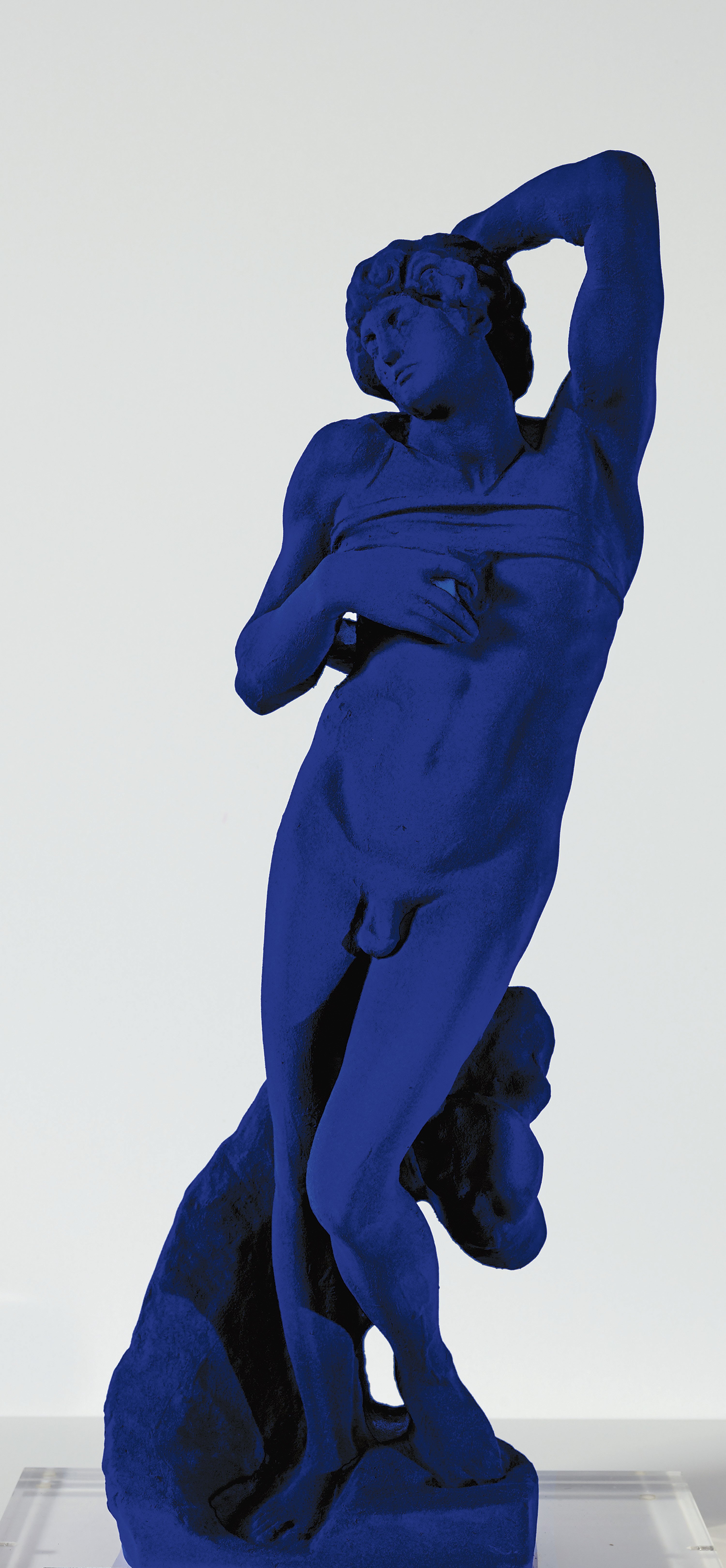The Dying Slave (by Michelangelo)
In 1962 Yves Klein began intervening on plaster models purchased at the Louvre, such as the Aphrodite of Knidos, the Victory of Samothrace and this Dying Slave by Michelangelo. The contrapposto and the sensuality of the figures contrast with the uniformity of the surface, which the artist coats with International Klein Blue, the ultramarine blue he patented in 1957. This practice originated from his monochrome paintings, which he began producing around 1949.
This series, in which he appropriates major icons of art history, was preceded by others in which he similarly covers elements taken from nature – for example, sea sponges, planetary reliefs and plaster casts of the bodies of artists and people he knew, such as his friend Arman.
Following the artist’s unexpected death in June 1962, his widow authorised the serial production of this Dying Slave and other sculptures of his, putting one of Klein’s ideas into practice: to create multiples to question the status of artworks as exclusive objects.





